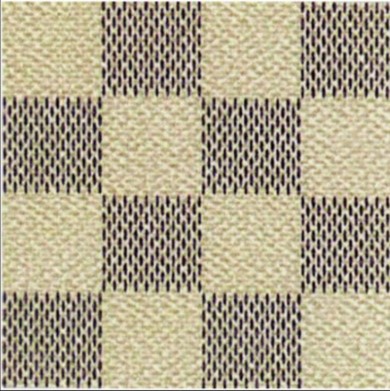The EU General Court recently decided that Louis Vuitton had not provided sufficient evidence to establish that its well-known 'Damier Azur' pattern mark had acquired distinctiveness in the EU. The Court's decision highlights the significant role that the evidence will play in such cases (evidence must be specific in nature and demonstrate how it aids the finding of distinctiveness). It is also a further reminder of the difficulties that can be faced when protecting less conventional trade marks, particularly marks of this kind.
Background
The Damier Azur figurative mark (pictured below) is an international registration which was designated in the EU for goods in Class 18 including luggage, backpacks, satchels, handbags, purses, wallets, key cases, card cases, umbrellas and sunshades. In 2015, an individual filed invalidity proceedings against the mark at the EUIPO, arguing that it was not distinctive.

In 2020, the General Court had concluded that the mark did not have inherent distinctiveness as it considered the chequerboard to be a basic, commonplace pattern comprising of a succession of squares of the same size, without any notable variation. Distinctiveness, however, may also be acquired through use. For this to be established, the burden of proof is on the proprietor to provide evidence demonstrating that "at least a significant proportion of the relevant public identifies the goods and services as originating from a particular undertaking, because of the mark".
Due to the nature of the mark, it was necessary for Louis Vuitton to demonstrate acquired distinctiveness across the whole of the EU. For the purposes of the assessment, the EUIPO Board of Appeal had considered the position in Bulgaria, Estonia, Latvia, Lithuania, Slovakia and Slovenia (being EU Member States where, in addition to Malta, Louis Vuitton does not have any stores). It concluded that acquired distinctiveness had not been established in those Member States, and Louis Vuitton appealed.
Decision
Whilst the General Court did conclude the mark had acquired distinctiveness based on the evidence provided in relation to Estonia, overall, the evidence did not establish acquired distinctiveness in the Member States under consideration.
Louis Vuitton had relied upon a broad range of categories of evidence including: the value and market share of the brand; the history of the mark; sales invoices in the relevant Member States; catalogues, ad campaigns and media coverage; distribution of trade magazines; use of the mark on the internet; experts' statement; opinion polls; and evidence concerning infringement proceedings. However, other than in relation to Estonia, the General Court found that the evidence was either insignificant in relation to the relevant Member State, or was internal, or was directed at other Member States.
Interestingly, the Court also rejected the argument that the Board of Appeal's analysis of acquired distinctiveness was "detached from reality". Louis Vuitton argued that the Board did not take into account that, across the EU, consumers engage in homogenous behaviour (particularly in regards to luxury brands), specifically because they travel and use the internet. The General Court rejected this, as being too general in nature, and unsupported by evidence.
Evidence for acquired distinctiveness across the EU does not require supporting evidence to be produced for each Member State individually and in some cases, evidence may be accepted as relevant to several Member States. The CJEU in KitKat gave examples where a business may group certain states together, for example, for distribution networks or for marketing purposes. States may also be grouped due to geographic, cultural or linguistic proximity. Louis Vuitton argued that Latvia and Lithuania were geographically and culturally close to Poland and Sweden (states where it argued acquired distinctiveness was established) and similarly that Bulgaria, Slovakia and Slovenia were close to Romania. However, the Court concluded the evidence provided did not establish these states had been grouped together for business purposes, treating them as one market.